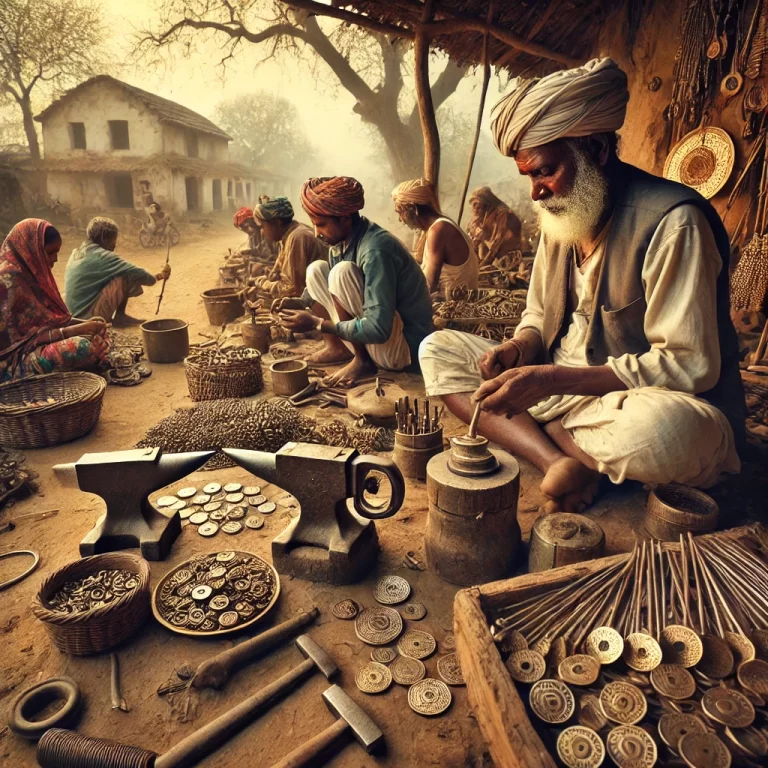The word “Noa” holds a special place in Bengali culture, especially as an ornament worn by married women. More than just a piece of jewelry, the Noa symbolizes deep-rooted social and cultural significance. In Gaja village, located in Howrah district, a rich tradition has evolved around this craft, which local artisans have been carefully preserving and nurturing for generations.
The process of making Noa is highly labor-intensive. There are no formal factories in the village—these ornaments are crafted within households, with all family members contributing to the process. Both men and women are equally involved in this intricate work. Small circular wires made of aluminum or iron are skillfully bent to form the basic shape of the Noa, which are then crafted into various designs and patterns. Each piece takes several hours to complete and, being entirely handmade, every Noa is unique.
In Gaja village, the Noa craft is not merely a source of livelihood—it is an integral part of the local culture and community identity. Artisans from this village sell their handcrafted Noa at major fairs such as the Kumbh Mela, Gangasagar Mela, and other large gatherings. There is significant demand for these ornaments across India, and even internationally. However, artisans report that they do not receive fair compensation for their hard work. Government support is essential to preserve and expand this traditional art form.
Currently, many families in the village are struggling financially. Seasonal flooding, especially during the monsoons, poses a major threat to their homes and livelihoods, as the village is situated on the banks of the Damodar River. Much of the village is submerged during this time, disrupting the craft work. To improve the standard of living for these Noa artisans, government assistance is urgently needed. Additionally, the rising cost of raw materials has forced many families to abandon the craft altogether.
To sustain the Noa tradition of Gaja village, it is vital for educated youth to come forward. With the help of modern technology, this traditional craft can reach new heights. Selling Noa on digital platforms could increase demand and ensure fair compensation for the artisans.
The Noa craft of Gaja village is a treasured gem of Indian handicrafts. Its design, beauty, and cultural significance are a source of pride for our heritage. Therefore, it is our collective responsibility to preserve this tradition and to provide due respect, recognition, and protection to its artisans.

